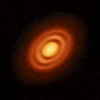Inner Workings: Newborn stars don't have enough dust to build planets. What are the missing ingredients?
- PMID: 30992397
- PMCID: PMC6475408
- DOI: 10.1073/pnas.1904572116
Inner Workings: Newborn stars don't have enough dust to build planets. What are the missing ingredients?
Figures


References
-
- Manara CF. Why do protoplanetary disks appear not massive enough to form the known exoplanet population? Astron Astrophys. 2018;618:L3.
-
- Levison HF, Kretke KA, Duncan MJ. Growing the gas-giant planets by the gradual accumulation of pebbles. Nature. 2015;524:322–324. - PubMed
-
- McClure MK. Mass measurements in protoplanetary disks from hydrogen deuteride. Astrophys J. 2016;831:167.
LinkOut - more resources
Full Text Sources

